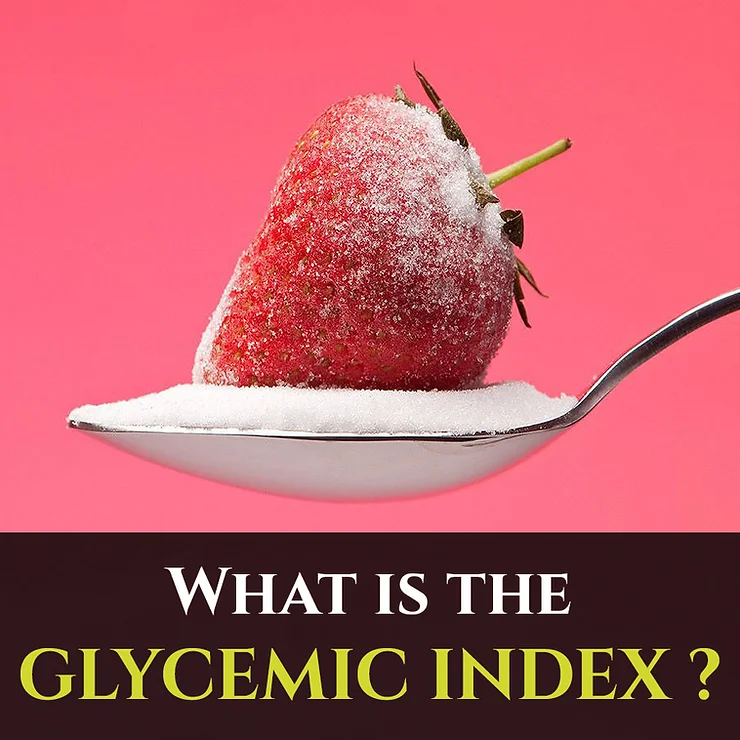You must have sugar to survive. But sugar is bad for you, right? It all depends on the way sugar is presented to your body. That’s where the glycemic index comes in. Let’s look at the ways sugar heals…or kills you.
Sugar is not sugar is not sugar!
Your brain cells must have enough sugar for you to stay conscious. Your heart and muscles require sugar to be active. In fact, the basic molecule that every cell in your body absolutely must have…is sugar.
Then why all the fuss about sugar? I’ll tell you why.
Depending on the way sugar gets to your cells, it will heal you or kill you! So, you must learn about the new standard that helps measure this process. It's called the glycemic index (GI). The glycemic index is a measure of how quickly 50 grams of carbohydrates in a particular food is converted to glucose (the simplest sugar molecule) in your body. Unless you go exercise shortly after eating, the higher the glycemic index of the food you consume, the faster it causes all sorts of diseases.
In fact, consuming high glycemic foods has been biochemically proven to promote obesity, diabetes, cancer, poor immune system, and generalized body inflammation.
For example, since the glycemic index was first described in 1981 by Jenkins,[1] it has become the new standard for diabetes management in France, the United Kingdom, Australia, Canada, and New Zealand.
Now that you are getting a hint about the power of consuming sugar. Before I explain more about how the glycemic index can guide you to preventing and reversing disease, let’s look a just a few of the proven adverse effects of consuming sugar.
Sugar can do all this damage?
There is a multitude of illnesses that are caused by ingesting sugar. Let me just give you a few. First off, we know that sugar contributes to obesity.[2] Sugar can increase systolic blood pressure.[3] Sugar spikes insulin which leads to metabolic syndrome, heart disease, and diabetes (explained more in my next article).
Moreover, sugar basically feeds cancer.[4] In fact, sugar consumption plays a key role in the development of many cancers, including:
pancreatic cancer in women[5]
stomach cancer[6]
biliary tract[7] and gall bladder cancer[8]
colon cancer[9]
lung cancer[10]
prostate cancer[11]
breast cancer[12]
small intestinal cancer[13]
laryngeal cancer[14]
rectal cancer[15]
kidney cancer[16]
liver tumors[17] and
endometrial cancer[18]
Have I gotten your attention? Essentially, high glycemic foods load your body with dangerous sugar, while low glycemic foods give nutrients that naturally convert to the amount of sugar your body needs. And this pathway to providing sugar to your cells makes all the difference! That’s why I want so badly to explain the glycemic index in a bit more detail here.
Understand the glycemic index (GI) for your health
Interestingly, GI does not take into account portion size and total amount of carbohydrate in a meal or food type. Instead it is the measure of how quickly carbohydrate is converted to glucose in your body.
Glycemic index (GI) scores are 100 for glucose in most scales and 100 for white bread in other scales. It actually is not a measurement of calories. The GI goes beyond the simple versus complex carbohydrate classification. It actually will guide you to health.
In my next article I’ll explain which are the high GI foods, and how they cause obesity, metabolic syndrome / insulin resistance syndrome, diabetes, and heart disease. Wow, did I say sugary foods promote even heart attacks? Yes, that’s right!
To nutrient rich, low glycemic foods for health,
Michael Cutler, M.D.
[1] Jenkins DJ, Wolever TM, Jenkins AL. Starchy foods and glycemic index. Diabetes Care. 1988 Feb;11(2):149-59. [2] Keen, H., et al. Nutrient Intake, Adiposity, and Diabetes. British Medical Journal. 1989; 1: 655-658. [3] Preuss, H. G. Sugar-Induced Blood Pressure Elevations Over the Lifespan of Three Substrains of Wistar Rats. J Am Coll of Nutrition, 1998;17(1) 36-37. [4] Quillin, Patrick. “Cancer’s Sweet Tooth.” Nutrition Science News. Ap 2000. Also: Rothkopf, M. Nutrition. July/Aug 1990;6(4). [5] Michaud, D. Dietary Sugar, Glycemic Load, and Pancreatic Cancer Risk in a Prospective Study. J Natl Cancer Inst. Sep 4, 2002 ;94(17):1293-300. [6] Cornee, J., et al. A Case-control Study of Gastric Cancer and Nutritional Factors in Marseille, France. European Journal of Epidemiology. 1995;11:55-65. [7] Moerman, C. J., et al. Dietary Sugar Intake in the Etiology of Biliary Tract Cancer. International Journal of Epidemiology. Ap 1993;2(2):207-214. [8] Moerman, C. et al. Dietary Sugar Intake in the Etiology of Gallbladder Tract Cancer. Internat J of Epi. Ap 1993; 22(2):207-214. [9] Bostick, R. M., et al. Sugar, Meat and Fat Intake and Non-dietary Risk Factors for Colon Cancer Incidence in Iowa Women. Cancer Causes & Control. 1994:5:38-53. [10] De Stefani, E. Dietary Sugar and Lung Cancer: a Case Control Study in Uruguay. Nutrition and Cancer. 1998;31(2):132_7. [11] Deneo-Pellegrini H, et al. Foods, Nutrients and Prostate cancer: a Case-control study in Uruguay. Br J Cancer. 1999 May;80(3-4):591-7. [12] Potischman, N, et.al. Increased Risk of Early-stage Breast Cancer Related to Consumption of Sweet Foods among Women Less than Age 45 in the United States. Cancer Causes Control. 2002 Dec;13(10):937-46
[13] Negri. E. et al. Risk Factors for Adenocarcinoma of the Small Intestine. Int J Cancer. 1999:82:I2:171-174.
[14] Bosetti, C. et al. Food Groups and Laryngeal Cancer Risk: A Case-control Study from Italy and Switzerland. Int J Cancer, 2002:100(3): 355-358. [15] De Stefani E, Mendilaharsu M, and Deneo-Pellegrini H. Sucrose as a Risk Factor for Cancer of the Colon and Rectum: a Case-control Study in Uruguay. Int J Cancer. 1998 Jan 5;75(1):40-4. [16] Mellemgaard A. et al. Dietary Risk Factors for Renal Cell Carcinoma in Denmark. Eur J Cancer. 1996 Apr;32A(4):673-82. [17] Rogers AE, Nields HM, Newberne PM. Nutritional and Dietary Influences on Liver Tumorigenesis in Mice and Rats. Arch Toxicol Suppl. 1987;10:231-43. Review. [18] Levi F, Franceschi S, Negri E, La Vecchia C. Dietary Factors and the Risk of Endometrial Cancer. Cancer. 1993 Jun 1;71(11):3575-3581.









